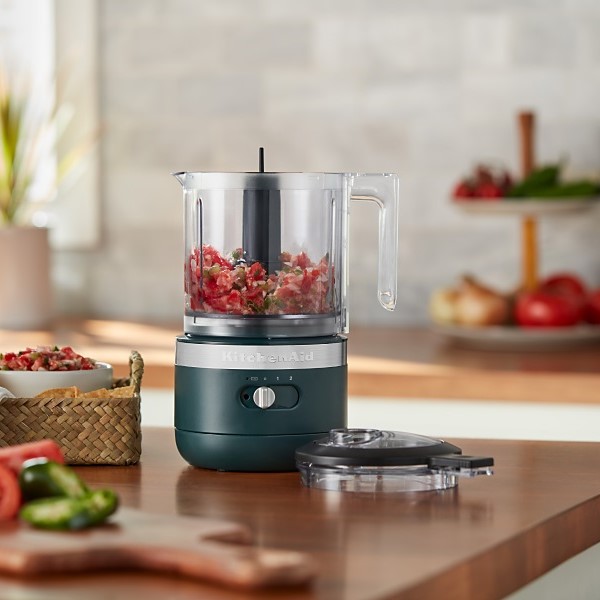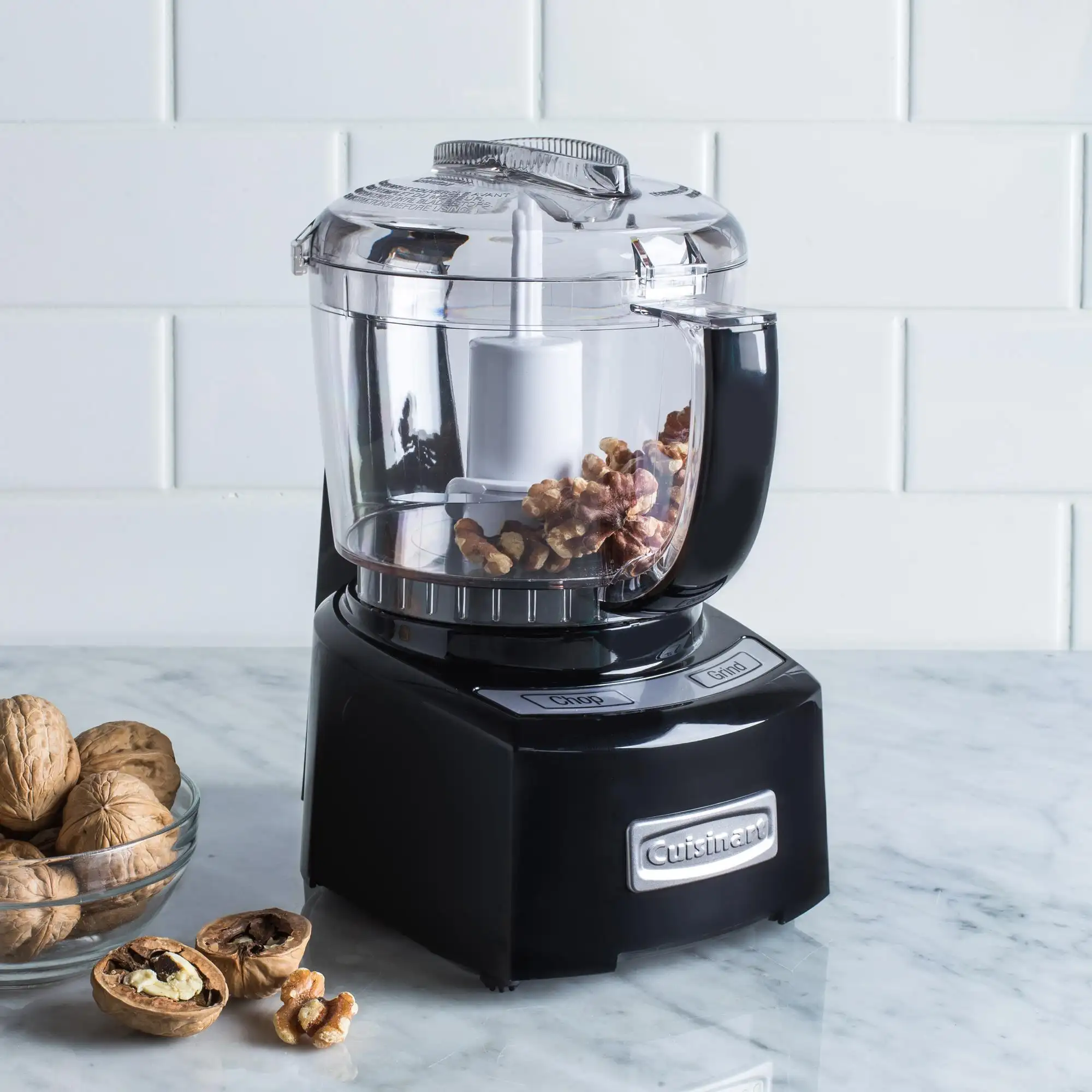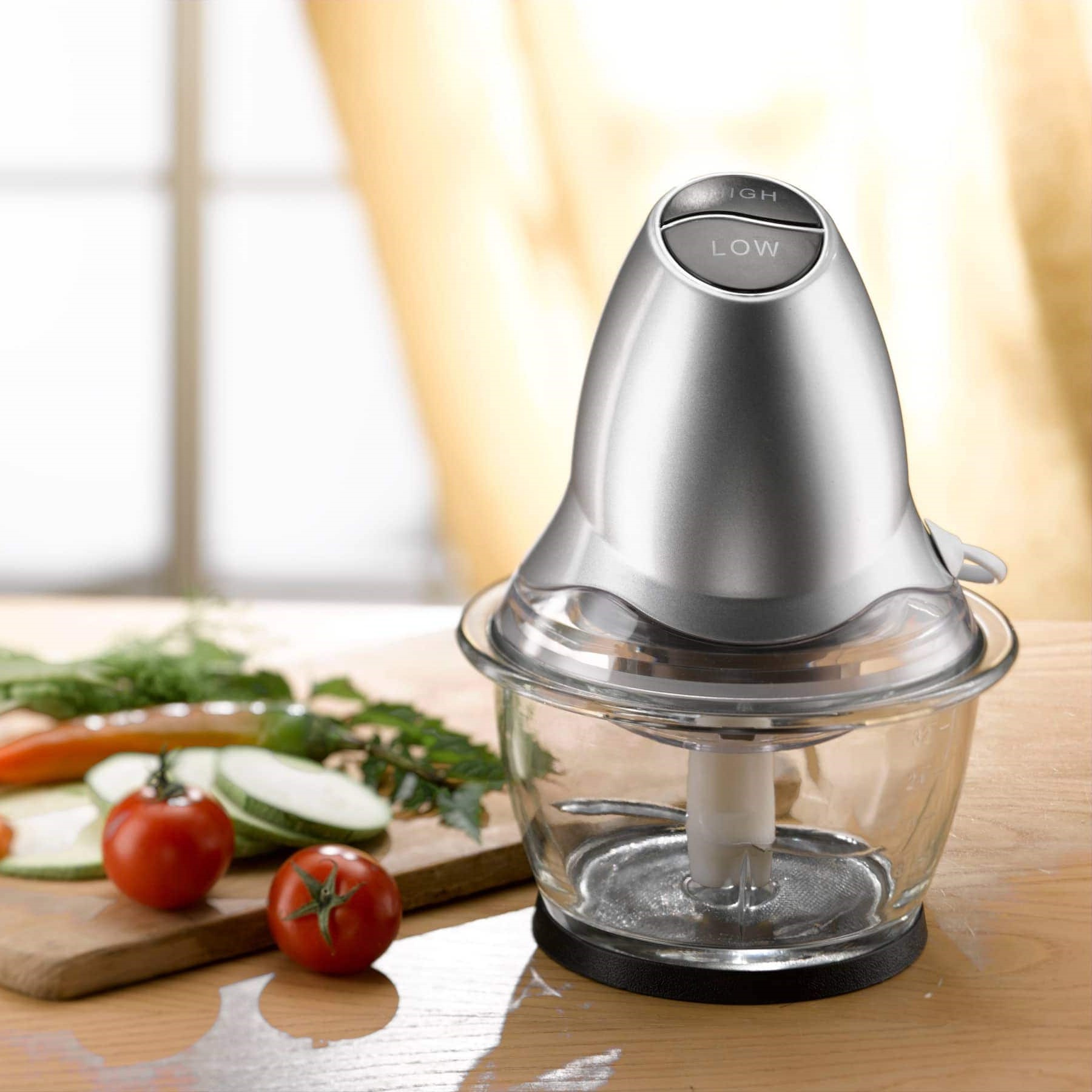
Overview of Food Processors vs. Food Choppers
When it comes to kitchen appliances, understanding the difference between food processors and food choppers is essential for optimizing your cooking experience. These devices, while similar, serve distinct purposes and offer various benefits depending on your culinary needs.

Key Physical and Functional Differences
Food processors and food choppers differ significantly in size, function, and versatility.
- Size: Food processors are generally larger, offering capacities that can handle bulk processing of ingredients. In contrast, food choppers are more compact, making them ideal for smaller kitchens or less voluminous tasks.
- Functionality: Food processors are equipped with various attachments. These include blades and disks for slicing, grating, and kneading. Food choppers typically feature a single blade, focusing on basic tasks like chopping and mincing.
- Versatility: Due to their multiple attachments and powerful motors, food processors can tackle a variety of tasks from shredding cheese to making dough. Food choppers, with their simpler design, are best suited for quick jobs like chopping nuts or creating small batches of dips.
Understanding these key differences aids in making an informed decision about which appliance best meets your cooking style and kitchen requirements.
Choosing the Right Appliance for Your Kitchen Needs
Choosing the right kitchen appliance depends on your cooking habits, kitchen size, and budget.
Considerations for Food Processor Purchases
When looking at food processors, consider these factors:
- Capacity: Larger families or frequent entertainers may benefit from a higher-capacity processor.
- Functions: Think about the tasks you perform most. Food processors with multiple blades and disks will offer more versatility.
- Power: For tough tasks like kneading dough or chopping hard vegetables, a more powerful motor is important.
- Space: Ensure you have adequate countertop or storage space for the typically larger size of food processors.
- Investment: Food processors are an investment. If you’ll use all its functions, it’s worth the cost.
Considerations for Food Chopper Purchases
For food choppers, keep in mind:
- Size and Storage: Perfect for small kitchens, choppers take up minimal space.
- Simplicity: With one blade, choppers are easy to use and clean. Great for quick tasks.
- Budget: If you need to save, choppers are more affordable than processors.
- Quantity: Ideal for single servings or small quantities. Not suited for bulk processing.
- Use Frequency: If you rarely cook or make small meals, a chopper is sufficient.
Popular Models and Their Features
Highlighting Top Food Processors
Food processors are pivotal in modern kitchens, offering extensive functionalities that ease meal preparations. Let’s examine some of the top models:
- Cuisinart Core Custom 10-Cup: This model is celebrated for its sealed work bowl and ample capacity, which is ideal for larger households or frequent cooking sessions. It includes various attachments that can tackle dough, cheese, meat, and more.
- Breville Sous Chef 12: Known for high versatility, it can manage almost all culinary tasks thanks to its wide chute and powerful motor. While it’s on the pricier side, its performance justifies the investment for those who cook often.
- Nutribullet NBP50100: Offers great value with multiple attachments including a dough hook and spiralizer, all stored within the unit’s compact design. Though it has a smaller feed opening, it’s powerful and fairly priced.
These models demonstrate the broad range of options available, each catering to different needs and preferences.
Highlighting Top Food Choppers
Food choppers, though smaller than food processors, are immensely useful for quick, smaller scale food preparation tasks. Here are some widely appreciated models:
- KitchenAid Cordless 5 Cup Chopper: This cordless model is portable and convenient for small, quick tasks, making it ideal for smaller kitchens or minimal prep needs.
- OXO Good Grips Chopper: It features a sharp blade and useful cup markings. It’s affordable and easy to clean but prone to staining.
- Magic Bullet Kitchen Prep: This model blurs the line between a food processor and a chopper. It’s compact yet powerful and includes blending cups for smoothie preparation on the go.
These choppers are perfect for those who need quick solutions without the larger footprint or investment of a food processor.
Comparison of Capacity and Performance
Food Processor Capacities and Versatility
Food processors come with varying capacities, typically ranging from small 3-cup versions to large 16-cup models. This adaptability makes them ideal for both small and large cooking tasks. A powerful motor allows food processors to handle a multitude of tasks including slicing, dicing, shredding, and kneading. The variety of attachments and speed settings further enhances their capability to handle diverse recipes, from chopped vegetables to pureed soups and kneaded dough, making them a versatile choice for any kitchen.
Food Chopper Sizes and Specializations
On the other side, food choppers are much smaller, often holding between 1 to 5 cups. They are designed to perform specific tasks, such as chopping and mincing, with efficiency and speed. Due to their compact size, they are perfect for small kitchens or for tasks that require quick, light processing. They generally have fewer features compared to food processors and lack versatility but excel in tasks like creating salsas, chopping herbs, and making small batches of dips. Their straightforward, compact design makes them easy to store and clean.
 Price Considerations and Value for Money
Price Considerations and Value for Money
When deciding between a food processor and a food chopper, price plays a significant role. This section will explore their cost-effectiveness and affordability.
Cost-Effectiveness of Food Processors
Food processors represent a bigger upfront investment compared to food choppers. However, they justify their higher price with versatility and efficiency. They can perform multiple kitchen tasks like slicing, kneading, and pureeing which otherwise would require separate gadgets. This multi-functionality can lead to cost savings in the long run as you avoid purchasing additional appliances. Moreover, sturdy construction and extended warranties often accompany higher-priced models, ensuring long-term usability and saving replacement costs.
Affordability of Food Choppers
Food choppers are generally more affordable than food processors. They are ideal for small, quick tasks, making them a budget-friendly choice for those who don’t require extensive food preparation capabilities. Their lower cost also makes them an attractive option for people with less frequent cooking needs or smaller kitchen spaces. Though they offer fewer functions, the cost-benefit ratio is excellent for routine tasks like making dips or chopping vegetables. Additionally, they consume less power and need less storage space, contributing to their overall economic efficiency.
Common Uses and Recipes
When it comes to kitchen tasks, food processors and choppers each shine in different scenarios.
Ideal Uses for Food Processors in Meal Prep
Food processors are incredibly versatile, making them ideal for a variety of meal prep tasks:
- Chopping vegetables: Quickly chop onions, carrots, and peppers for stews or stir-fries.
- Making doughs and batters: Mix pie crusts or cake batters without manual kneading.
- Grinding meats: Create your own ground meats for fresher, customized blends.
- Preparing nut butters: Process nuts into smooth or chunky butters with ease.
- Whipping up dips: Combine ingredients for hummus, salsa or pesto in no time.
These uses showcase the processor’s ability to handle tasks that require both power and finesse.
Best Tasks for Food Choppers
Food choppers excel in small-scale food preparation:
- Creating garnishes: Chop herbs finely for a fresh burst of flavor.
- Whisking dressings: Some choppers come with attachments to emulsify vinaigrettes.
- Making small batches of dips: Perfect for quick salsa or guacamole for two.
- Chopping nuts: Quickly prep nuts for baking or as toppings.
- Dicing fruits: Prepare fruit for salsas or as salad add-ins without mushing.
These tasks highlight the chopper’s efficiency in quick prep and its suitability for less intensive jobs.
Opting for a food processor or chopper depends on the complexity and quantity of food prep needed. With both in your kitchen, nearly any task can be tackled with ease and efficiency.
Care and Maintenance Tips
Proper care extends the life of kitchen appliances. Here are tips for keeping food processors and choppers functioning well.
Cleaning and Storing Food Processors
To clean, disassemble parts and wash with soapy water. Blending bowls and some attachments are often dishwasher safe. Always dry components before reassembling. For storage, keep attachments inside the bowl if space allows, and cover with a clean cloth to protect from dust.
Keeping Your Food Chopper in Top Condition
After use, immediately rinse the chopper to prevent food from sticking. Wash the blade and bowl with care, as the blades are sharp. Never immerse the motor base in water. Instead, wipe with a damp cloth. Store in a dry place to prevent mold and smells. Regular checks on the blade’s sharpness ensure efficient chopping for each use.
 Conclusion
Conclusion
In summary, both food choppers and food processors have unique advantages and drawbacks, catering to different culinary needs. While a food chopper excels in its simplicity and ease of use, a food processor offers a wealth of versatility for various kitchen tasks.
Ultimately, when deciding whether a food chopper or food processor suits your needs better, reflect on your cooking habits, available space, and budget.
So, going back to our original question: Is a food chopper the same as a food processor? The answer is no, they are not the same. They serve different purposes, each with its own distinct advantages, making them invaluable tools in their own right.





